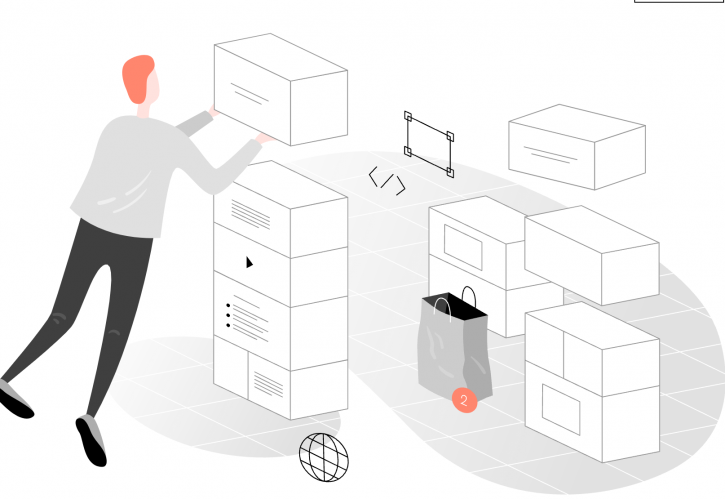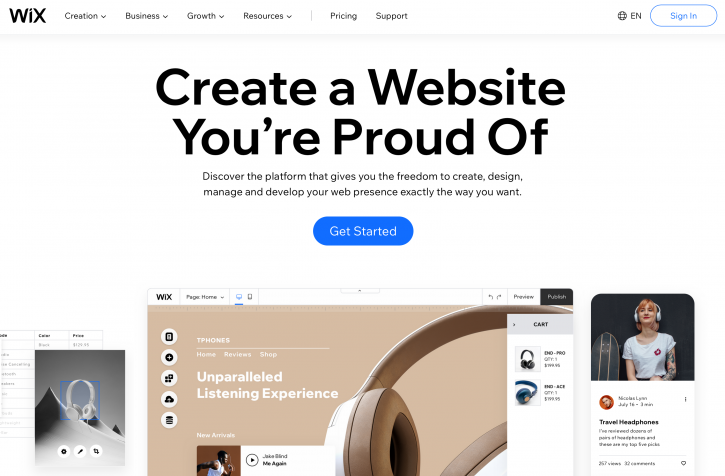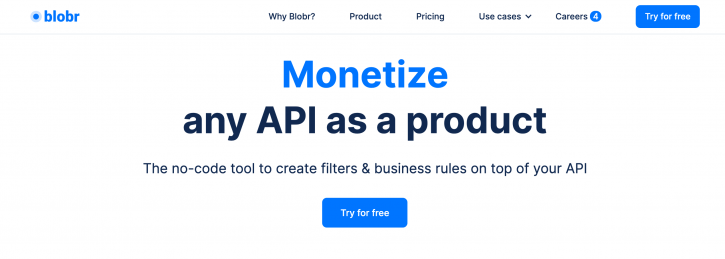Header Title
Low code/no code and APIs = business model rethinks
Big moves towards low code/no code software frameworks seem set to drive big rethinks in business models
Mainstream website-builder tools for us mere mortals like Squarespace, Strikingly, Weeblyo, Webydo, Website.com, Wix and Zyro (as well as Jimdo in Germany) – in strangely skewed alphabetical order and to name just a few – have been growing in popularity for quite a while. They’ve subsequently been joined by other providers, such as Webflow, a company with (allegedly) more “designer power” and a wider mission of enablement:
We’re enabling everyone to create for the web
Certain WordPress tools, like Elementor and Themify Builder, also employ the same easy-to-use, drag-and-drop approach, and have thus become very popular within the vast WordPress ecosystem.
One of the big attractions of these kinds of website-builder tools is that most of them provide bucketloads of professional-looking templates that people can simply copy, adapt and use to get around all the pesky, can’t-do-it-myself design work traditionally associated with building a website presence. Similarly, the slow, technically demanding programming and coding that have been commonplace for so many years gets replaced by straightforward drag-and-drop tools that link up specific components, modules and functionalities, so the website as a whole can work its magic.
When people began using their smartphones for all kinds of can’t-do-without services, these kinds of DIY website builders (often starting out with a free version) quickly became extra popular because they usually include “responsive design” capabilities that make sure websites look at least OK on virtually any device or in any format.

The basic idea, well-explained by Tilda – an intriguing Russian dark horse entrant to the website builder field
Trending, accelerating
Before long, these kinds of low(er)-end website builders also became known as no code/low code tools. When a trend acquires an actual journo-speak name, you know it’s got some traction – at least for a while. And in the course of 2020, low–code/no-code tools and capabilities ran into an unpredicted driven-by-practical-needs boom as businesses sought rapid, straightforward solutions for establishing the new frameworks they urgently needed to deal with the sudden, involuntary onset of Covid-19 impacted remote working.
According to reputable research firm Gartner, the fast-growing low–code market for the enterprise sector alone could reach USD 11.3 billion this year (2021) as the surge in remote application development sparked by Covid-19 continues to play out. Gartner predicts low/no-code will represent 65% of all app development by 2024. Low-code application platforms (LCAP) are expected to remain the largest component of the low-code development technology market through 2022, increasing by 65% over 2020 to USD 5.8 billion.

Wix landing page
From talent gap to “citizen developer” tools
When everybody now needs some kind of digital presence or tool – whether website, blog, app or Facebook page – to do business, run a society, launch a political movement, promote a religion, provide public services, hold a concert or voice an opinion, demand quickly begins to outstrip supply. There has long been a talent gap for IT developers, but the recent pandemic quickly made this problem much worse.
As more and more companies have been launching digital initiatives and remote working becomes the norm more than the exception, the demand for people with IT coding capabilities increased while the supply of computer science professionals still fell short. When the Covid-19 pandemic hit, companies as well as public authorities suddenly needed all the tools necessary to implement digital transformation initiatives immediately — with no time to waste.
Suddenly website development was shifting to the realm of DIY and democratisation. Low–code/no-code tools mean virtually anyone is now able (in theory, at least) to create and modify their own digital tools – from complete websites to apps to functional widgets – without complex coding skills. Making use of easy-to-grasp visual interfaces and drag-and-drop functionality instead results in more organisational flexibility and agility, helps tackle growing IT backlogs and tight budgets, and helps reduce the accelerating bottleneck problems stemming from the lack of skilled developers and competent coders.
Embrace the “Everyone a Developer” concept
From blocks and modules to connectors – API heaven
It’s important to realise that the no code/low code mindset and technical approach don’t just apply to the digital structures used by website designers. It now also extends to online stores and e-commerce setups, using tools like Voog and Shopify. There are also “no code” A.I. platforms like Automate from the Primer analysis software company. This enables people to build the algorithms that are central to AI development even if they don’t have the specialist skills normally required.
The no code/low code mantra also extends from using the different functionality modules to focusing on the connectors that enable the actual linking and thus create value – the Application Programming Interfaces (APIs). Nowadays, a company can live (or die) by API, with a robust well-developed API being your claim to a viable growth spot in an entire ecosystem of compoundable capabilities. This is the whole idea behind the ambitious Weaviate AI-based vector search engine, for example.
For example, there is now also a whole ecosystem of headless content management systems in which the backend and the frontend management of a website are divided into two separate, decoupled systems, with the content transmitted through an application programming interface (API).
Rather than returning to the days of dominant all-in-one, juggernaut platforms that locked us customers into their rigid embrace and for-them-lucrative revenue engines, we’re now seeing new kinds of companies and products that exist to bring other platforms together, using APIs and integrations to make a substantial range of smaller specialist components work with one another (hopefully seamlessly). This means innovative coders don’t have to re-invent the wheel to provide a big lumbering, package – just to make their brainchild connectable to loads of other “bits”.
When the APIs work as intended, it becomes (relatively) easy to connect apps and functionalities, and to automate key workflows, this helping relieve us of repetitive, day-to-day tasks and boosting productivity. Of course, there are no code/low code tools for getting apps to work together, too, like Zapier and Berlin-based Levity, as well as enterprise setups like Creatio, with this as its motto:
Welcome to the world where everyone can automate business ideas in minutes
From pipes to products to value
In this kind of scenario, the pipes and connectors become the products as well as the value generators. API-driven connector companies like Twilio, Segment, Scale, Checkr, Plaid and Stripe are already seriously big business.
At a different level of enablement, Paris-based startup Blobr is aiming to become the default “business and product layer” for APIs. They use no-code technology to make it easier for product experts and business people to manage and monetise their existing APIs without technical knowledge and not needing to use costly in-house engineering resources. The aim seems to be to make Blobr’s API products easily available for an entire ecosystem of digital capabilities and specialist tools born and bred elsewhere.
The development game has changed
As totally anecdotal evidence, I recently had a new website done for one of my companies – the young designer I hired used Wix (for the sake of full declaration – I also use Webflow) to give me a website that cost 10% of the iteration it replaced. Furthermore, it was designed, finished and launched in one month rather than the year (plus) its previous iteration took. For me, this was a “no pain” solution, a fact that for most of us mere mortals is much more important than all the geek-speak and “how” coding (or lack thereof) details. There’s just no real comparison …
Obviously, this doesn’t apply so much to big companies enmired in legacy frameworks and vast, complex digital ecosystems like Sharepoint, and ring-fenced by strong vested interests in IT departments and consultancy agencies. But for us SMEs and others focused on rapid-response capabilities and low-cost implementation, the digital deployment and idea implementation game has changed – big time.
DIY requires new agency value propositions
The proliferation of low code/no code solutions and API-linked integrations is great for empowering individuals and those willing or able to pick up the powerful DIY tools now available. However, these breakthrough DIY capabilities seem likely to put big dents in the commercial attractiveness of the countless “digital agencies” that in some vague and mysterious way claim to be able to provide us with gateways into new realms of digital wonderfulness.
The traditional way for such agencies to show off their capabilities is via the dazzle effect, parading high-impact visuals and attention-grabber boast boards. Many digital agencies still revel in showing off the details of “how” jiggery-pokery, often with a strong “don’t try this at home” sub-text. This is the old-school “magic curtain” trick, one that disempowers the customer while sticking a big suction tube into his/her pocket, and doesn’t fit well with modern mantras about agility, teamwork co-creation, collaborative development and transparency.
Low code/no code tools enable individual specialists and freelancers to compete with traditional agencies and specialist consultancies in their city-centre offices, often heavy on bricks-and-mortar overhead, as well as big on manpower costs – but which from the customer’s viewpoint don’t seem to be able to do much more per dollar.
In any industry, when everybody is given access to the same “tools of the trade” as the professionals, the true artisans have to find new differentiators and new kinds of visibly attractive value propositions. Yes, they can help people use the newly available tools, saving them time and hassle. But that’s not a growth market, and the agendas are beyond the control of an aspiring digital wizard.
If the “how” has been demystified and democratised, it’s suddenly both possible and desirable to shift the creative focus by delivering creativity, ideas and value propositions – the bigger issues of “what” and “why” – that aren’t embedded in the software tools or in on-screen real estate. When software takes over the world, the questions that really matter stop being rooted in software. And the difficult answers to the big questions aren’t available off the shelf – or for (almost) free.
Business tomorrow can’t – and won’t – be like business yesterday. There seem to be big opportunities for enlightened and digitally capable/artisanal agencies to move a long way up the strategic ladder – where the nerdy “how” details are less interesting (and instead simply a prerequisite for doing business credibly) and less important for positioning than the “what” and “why” of bigger commercial and strategic perspectives.



